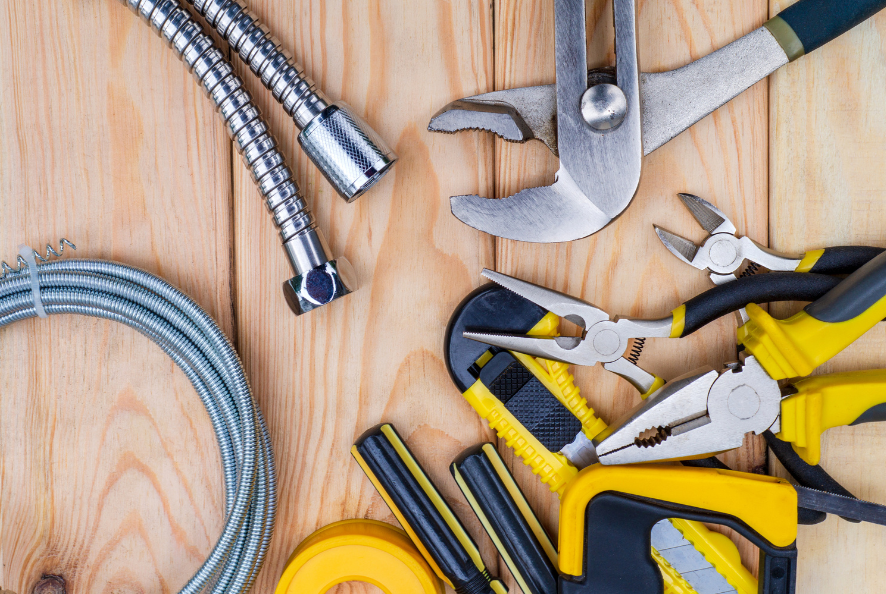Why Is My Toilet Leaking from the Bottom? Common Causes & DIY Fixes
Noticed Water Around the Base of Your Toilet? Here’s What It Means
A little water around the base of your toilet doesn't seem like a big deal until you're dealing with mold and/or water damage, and/or warped floors. If you're wondering, "Why is my toilet leaking at the base?", then you're not alone.
At Amenify, we help homeowners stay ahead of common household issues, and we have written this guide to show you why your toilet may be leaking water at the base, how to fix it yourself, and when to call a pro.
5 Most Common Causes for Toilet Leaking at the Base
Here are a few things to look into for your leak, and things you should know first before running out and buying a wrench:
1. Old Wax Ring
A wax ring creates a seal between your toilet and the flange on your bathroom floor. Over time, it will dry out, crack, or get knocked off, leading your toilet to leak every time you flush.
2. Loose or Damaged Mounting Bolts
You'll see a couple of bolts at the base of your toilet. Those bolts hold the toilet to the floor, and these mounting bolts compress the seal in the wax ring under your toilet. If the bolts are not tight and/or rusty, it causes a lack of seal, therefore allowing water to leak.
3. Cracked Toilet Base
A hairline crack in the porcelain can cause slow leaks that can accumulate over time. Cracks can often be imperceptible and cause a lot of damage.
4. Damaged Toilet Flange
The flange is what connects your toilet to the drainpipe. If it is broken, corroded, or not aligned correctly, it will not seal properly and will allow water out after every flush.
5. Condensation (Not a Leak!)
Sometimes, the dripping is just condensation on a cold toilet tank in a humid bathroom. This is most likely in summer or in bathrooms with no air movement.
What to Do Immediately After Spotting a Toilet Leak?
Before diving into repairs, stop the leak from spreading:
Turn off the water supply – Find the shut-off valve behind your toilet and turn it clockwise.
Dry the floor – Mop or towel up the water to prevent floor or subfloor damage.
Place towels around the base – Catch any remaining drips as you investigate.
Once that’s done, it’s time to troubleshoot.
Do It Yourself: Repair a Toilet That is Leaking from the Bottom
Most Common Repair: Install a New Wax Ring
Tools to purchase
Adjustable wrench
Replacement wax ring
Screw driver
Putty knife
Old towels or a blanket
Step 1: Remove the Toilet
Turn off the water supply.
Flush and empty the tank.
Disconnect the water supply.
Unscrew the mounting bolts.
Gently rock the toilet to break the wax seal.
Carefully lift it off and set it on a towel.
Step 2: Take Off and Look at the Wax Ring
Scrape the old wax ring off with a putty knife.
Check for cracks, corrosion, and misalignment on the flange.
Make the flange as smooth as you can by cleaning it.
Step 3: Installing the New Wax Ring
You can either put the new wax ring on the toilet outlet or the flange.
Fit the bolts through the holes and lower the toilet straight down.
To create a waterproof seal, gently press down.
Step 4: Reassemble everything and run tests
Do not overtighten the mounting bolts; instead, tighten them evenly.
Connect the water supply again.
Switch the valve back on.
Inspect for leaks and flush.
When to Go from a DIY Project to Calling an Amenify Professional?
While most leaks are manageable with some elbow grease, below are the situations when you should call a professional via the Amenify app:
Your toilet continues to leak after a wax ring replacement.
The flange is broken or unstable.
Your toilet has cracks.
You would like a speedy repair without trial and error.
Amenify professionals are trained to do everything for leak repair through economized toilet replacements when needed, and they are available on demand.
How to Avoid Future Toilet Leaks?
Preventative care goes a long way:
Tighten the bolts often to avoid movement.
Check the base for moisture and mustiness.
Be mindful not to overtighten nuts when servicing—porcelain cracks easily.
Book a service check-up with Amenify at least every year, especially with older homes.

































